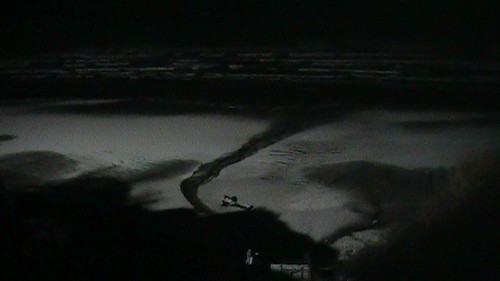I’m back to the sales calls, this time for Video Management Systems, the back-end software that will coordinate all our cameras. This field seems more competitive than that of eye tracking, or maybe there is just more demand, as VMS is what runs your basic surveillance system you find anywhere from the convenience store to the casino. So people are scrambling for our business.
However, whenever we try to describe what we’re doing and what our needs are, we run into some problems. You want to record audio? Well, that’s illegal in surveillance systems (it’s ok for research as long as you get consent), so it’s not something we deal a lot with. Don’t mount your camera near a heating or cooling vent or it will drown out the video. The microphones on the cameras are poor, and by the way, it doesn’t sync correctly with the video – “it’s like watching a bad Godzilla movie,” said the engineer we spoke with this morning. You want to add criteria to flag video and grab certain pieces? Well, you can’t access the video stream because if you do, then it’s not forensically admissable and can’t be used in court (Ok, we just need an exported copy, we’re not going to prosecute anyone even if they chew gum in the Visitor Center). You want to record high-resolution images? Well, you can either buy a huge amount of storage or a huge amount of processing capability. Minor obstacles, really, but a lot of decision points, even more than eye trackers. Again, though, it’s a learning experience in itself, so hopefully we’re generating some data that will save someone else some time in the future.
The pricing and purchasing is a bit strange, too. The companies seem to all have “sales” teams, but many can’t actually sell anything more than the software, some don’t even sell their software directly. Instead, we have to deal then with retailers and sometimes “integrators” that can sell us hardware, too, or at least specify requirements for us. Then there’s the matter of cameras – we haven’t decided on those, either, and it’s becoming clear that we’ll have several different types of cameras. Juggling all these decisions at once is quite a trick, literally.
At least it’s a moderately amusing process; many of the sales folks are here or were visiting in the Northwest recently, and we’ve commiserated over the last week about all the rain/snow/ice that ground the area to a halt from Seattle to Eugene.

